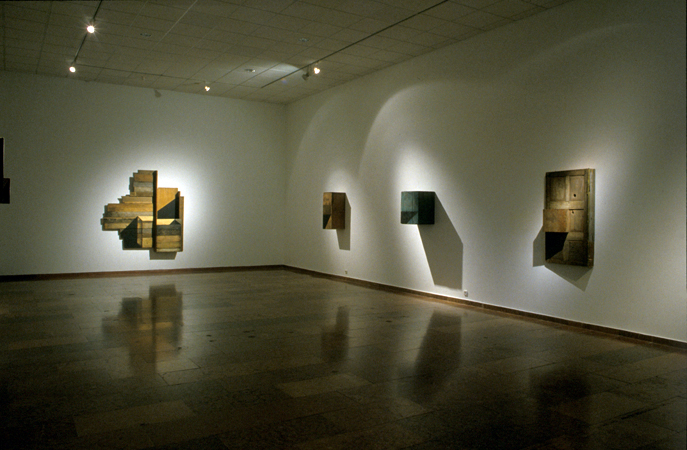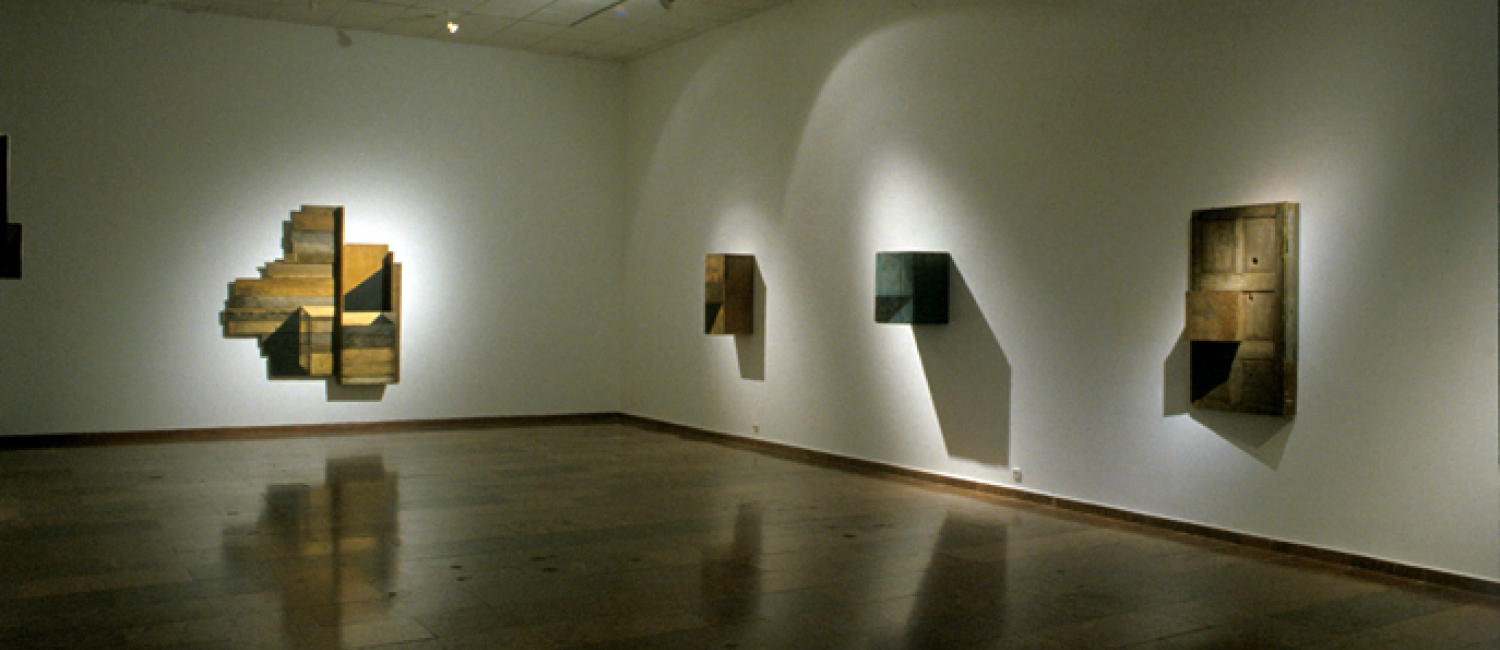Tamás Szikora put the fruits of a 17 year process of highly consistent artistic activity on show in four solo exhibitions of 1993 (Institut Hongrois, Paris; Szent István Király Museum, Székesfehérvár; Institut Français, Budapest; Dovin Gallery, Budapest): this was the culmination of a story in many chapters, that originally began with boxes found in a flee market. Playing on the dialogue between flat surfaces and three-dimensional space, Krisztina Passuth concluded her study with the words: "In the following: to be continued".
In continuation, as of 2001 the motives that had created an illusory effect on a plain surface take a startling step into space. A box shaped object that had originally been a low stool appears first of all, with the shadow in sharp painted outline. The traces of dull monotony over long decades of use can be discovered in the wooden material as well as the woodwork, but the object itself, and the painted shadow on it, obviously not cast by anything in the vicinity, along with the real shadow thrown by the object raises anew the old, but perpetual question of fact and fiction.
The piece entitled the "Stool Object" is first among a series of works that enter a new phase of the painter's artistic activity, where instead of experimenting with the illusionary depiction of space in paint the artist carries the work over into actual space, reaching back to a work exhibited at the Sao Paulo Biennale of 1986 that is no longer on show.
At that time the mammoth constructions assembled from paper covered units of highly divergent sizes, separated with emphatically outlined borders, likened by Katalin Néray to the architecture of the Trecento style of painting, had no continuation in three dimensions.
Fifteen years later, the object stemming from this basic idea, but also bound up closely with the artistic work proceeding since, has materialised in space with hardly a great deal to do with the box as a motive (a separation from this point of departure that was earlier also enacted in paint).
The "Negative Object" is a shadow thrown by one side of the box across negative space, a continuation of the painted surface that is an experiment with the play of the shadow of the whole object in its surroundings. "Object with Extension" shows the painterly quality inspired by the material of the object itself, the reciprocal relationship between paint and the material can be seen in the "Green Object," something written on the wood points to its earlier, unknown history in "Object with Contrary Directions", while in "Split Object" the split itself reveals the inner past of the material. An illusory character, play with positive and negative space, and the painterly quality of the wooden material are complemented by mass force for full effect in the massive pieces "Sacral Object" and "Wardrobe Object".
The centremost point of departure for this series is the connection between the passage of time and the phenomenon of the shadow, the innumerable variations possible within the individual objects themselves which creates a sense of their unfinished state. Szikora aims to accentuate, to grasp a fictitious moment in time with the painted shadow, and meanwhile the works are in constant change in real space and real time, where they need the movement of the visitor to involve us as well in their game with illusion.
Time in its passing is revealed in the memories attached to the low stool, in the spectacular play of splits and wood network, in the intimate nature of the woodwork, insertion, paintwork, and formative process, awakening the personal history of his own timeline in the visitor.
Exhibition curator: Kata Krasznahorkai

